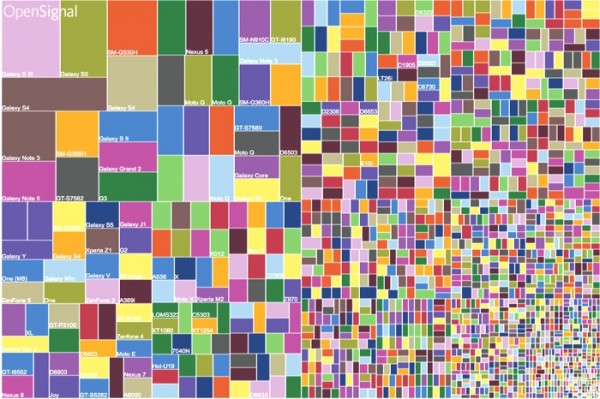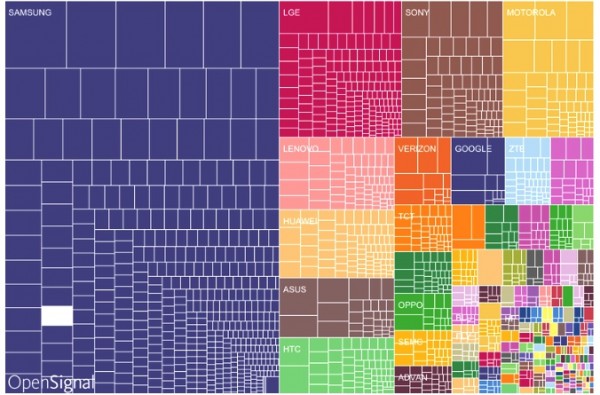
It’s not news that Android is a fragmented landscape with Android 4.4 KitKat still dominating the user base at 40% more than two years after its release. Did you know that, as of today, there are over 24,000 distinct Android devices? What’s perhaps more insane is that in 2013 when KitKat was released, that number sat at ‘just’ 12,000.
Perhaps this shouldn’t be all that surprising, given that you can shove the OS in just about anything. Want a $50 tablet? Android is your OS. In need of making your TV smarter? Try Android TV. From TVs, to tablets, smartphones, and every niche device out there, Android or some forked version of it can be installed. Heck, the entire Amazon electronic line runs on Android but because of all the tweaks, you likely wouldn’t know it.
So who are the biggest culprits of this? Samsung and Sony.
Samsung leads the pack with 37.8% of Android devices out there running on their hardware. Samsung is most famously known for releasing an array of devices each year and throwing them at the wall in hopes of some sticking versus doing any kind of meaningful R&D. They alone offer four different wearables with all different OS’s on them. With fierce competition, Samsung has faced 5 quarters of straight decline in their mobile division. In 2012, Samsung represented 43% of devices running some variation of Android.

A far cry from first place and perhaps most surprising is that Sony takes the number 2 spot on this list. Commanding a far smaller share at just 4.8%, Sony is the second largest culprit in forking Android. Sony Mobile owners likely know this all to well as the company had traditionally been very slow at offering the latest Android build and easily cutting off past devices. More recently, Sony has gotten better by offering Android 5.1 at a fairly reasonable time across the entire Xperia Z device range.
Now, keep in mind that this doesn’t make Sony the second largest Android hardware vendor. Instead, it means that Sony is responsible for offering the second most varied Android OS on their devices. With more ‘smart’ devices like home automation, cars, and wearables coming to market, things are surely going to get more complicated.
 With more and more varied versions of Android, it not only makes things harder for developers, which is why we continue to see new apps come to iOS far faster than Android despite the stark difference in market share between the two operating systems – but it also represents a bigger security risk for users which now sadly can download anti-virus programs on their Android smartphones and tablets.
With more and more varied versions of Android, it not only makes things harder for developers, which is why we continue to see new apps come to iOS far faster than Android despite the stark difference in market share between the two operating systems – but it also represents a bigger security risk for users which now sadly can download anti-virus programs on their Android smartphones and tablets.
While I like seeing Sony high on some list, this isn’t what I had in mind. Following Sony are usual suspects like LG, Motorola, and HTC.
Discuss:
Is your Android device on the latest build of Android?
[Via The Verge]

You must be logged in to post a comment.